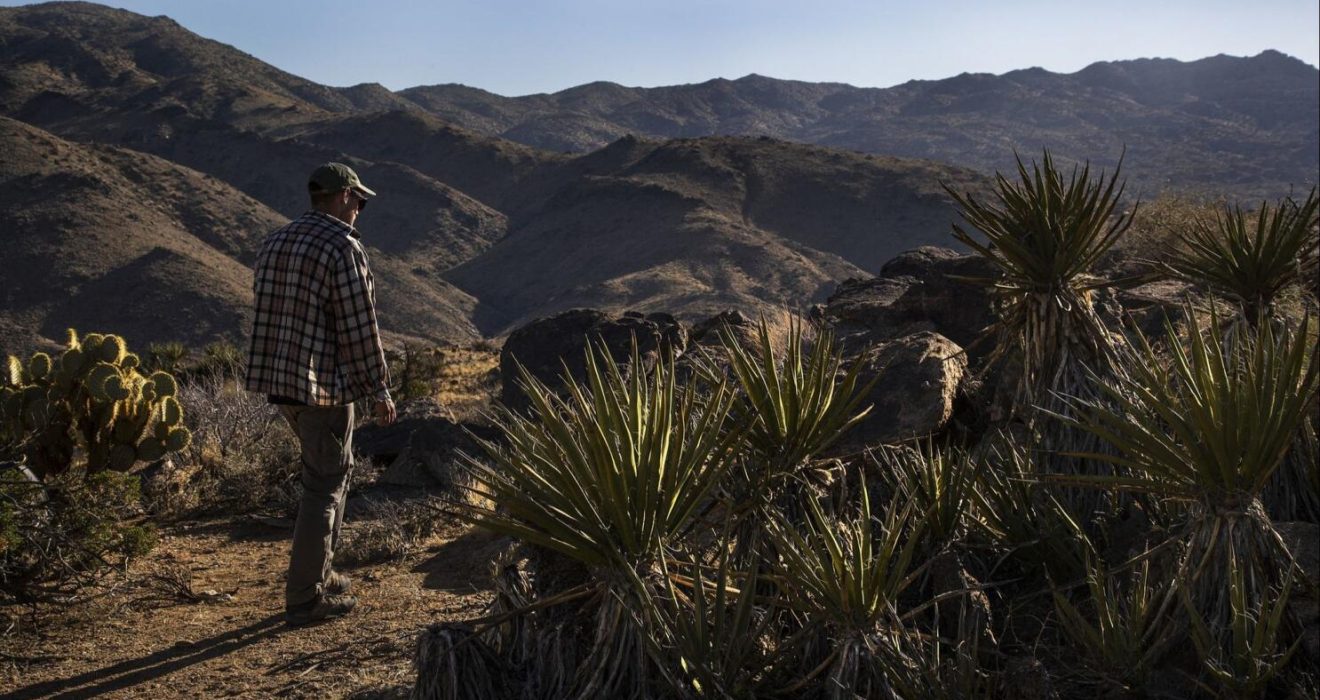California’s iconic Joshua trees, with their whimsical appearance reminiscent of Dr. Seuss illustrations, stand at the forefront of an environmental crisis that transcends the picturesque landscapes they once dominated. Over the past three years, the Mojave National Preserve, their historic sanctuary, has witnessed the harrowing aftermath of two catastrophic wildfires—the 2020 Dome Fire and the 2023 York Fire. The toll is stark and sobering, with an estimated 2.5 million Joshua trees lost, transforming vast expanses into haunting remnants of charred wilderness.
In the face of these unprecedented challenges, the Joshua trees, resilient symbols of California’s arid beauty, find themselves at the mercy of climate change’s relentless grip. The harsh realities of soaring temperatures, recurrent droughts, and intensified fires reshape the landscape, pushing these hardy trees to the brink of survival. Beyond the aesthetic loss, the decline of Joshua trees strikes at the heart of the Mojave Desert’s delicate ecosystem, where they play a vital role as a keystone species, offering shelter to rare creatures and serving as essential perches for birds.
Amid this crisis, a dedicated volunteer effort, fueled by the National Park Service and passionate individuals, emerges as a beacon of hope. The ongoing restoration project aims to replant thousands of Joshua trees, rekindling the majesty of a landscape that once stood as a testament to nature’s resilience.
A Devastating Toll on Joshua Trees
The iconic Joshua trees of California, resembling whimsical creations from a Dr. Seuss book, face an existential threat in the wake of devastating wildfires. Over the past three years, the Mojave National Preserve, home to these distinctive trees, witnessed the catastrophic aftermath of two massive fires—the 2020 Dome Fire and 2023 York Fire. The toll is staggering, with an estimated 2.5 million Joshua trees lost, transforming a once-dense forest into a haunting expanse of charred remnants.
Struggle for Survival
Once resilient and adapted to the arid expanses of inland California, Joshua trees are grappling with the harsh realities of climate change. The desert Southwest experiences soaring temperatures, recurrent drought, and intensified fires, pushing these hardy plants to their limits. The Southwest’s evolving climate presents a formidable challenge, testing the trees’ ability to endure in an environment that is increasingly hostile.
Nonnative Grasses and Accelerated Destruction
Historically, fires were infrequent and smaller in the Mojave Desert. However, the encroachment of nonnative grasses over recent decades has altered this equilibrium. These grasses act as fuel, facilitating the rapid spread of flames that can swiftly engulf vast numbers of Joshua trees. The changing fire dynamics pose a significant threat to an ecosystem that was once resilient to such widespread devastation.
Impact on Ecosystem and Biodiversity
Joshua trees hold the status of a keystone species, playing a crucial role in the delicate balance of the desert ecosystem. Their demise resonates beyond their spindly silhouettes; it jeopardizes the habitat of rare creatures. These trees serve as vital shelters for beetles and essential perches for bird species, such as the great horned owl. The threat to Joshua trees thus extends beyond aesthetic loss, imperiling the very character and biodiversity of the desert.
Wildfires Reshaping Ecosystems
The plight of the Joshua trees echoes a global pattern of wildfires reshaping ecosystems in unexpected places, once shielded from the intensity of such fires. As wildfires raged in rain forests and subarctic regions, the Mojave Desert’s gnarled sentinels stand as a poignant reminder of the far-reaching impacts of climate-induced fires on diverse landscapes.
Restoration Efforts: A Race Against Time
Amid the desolation, a beacon of hope emerges in the form of restoration efforts led by dedicated volunteers and field scientists. The National Park Service is spearheading a project to replant 4,000 Joshua trees over four years, with a specific focus on the Cima Dome area, identified as a climate refugia—a haven buffered from climate change impacts. The ambitious endeavor aims to revive a landscape marred by the scars of recent fires.
Adapting Strategies for Regeneration
While the restoration efforts provide optimism, challenges persist. Climate change-induced alterations in seed dispersal mechanisms, from giant sloths to smaller rodents, pose additional hurdles. Erin Knight, a field scientist leading recovery efforts, highlights the complexity, stating, “We are out here replanting with hopes to help naturally regenerate the area.” As California’s Joshua trees embark on a journey of survival, the story unfolds not just as a local conservation effort but as a global narrative of resilience and adaptation in the face of evolving environmental challenges.
Conclusion
As the battle to revive California’s Joshua trees unfolds, it becomes a poignant symbol of our collective responsibility in the face of environmental challenges. The loss of these iconic trees echoes a global pattern of ecosystems grappling with the intensified impacts of climate-induced fires. Yet, amidst the charred remnants, restoration efforts stand as a testament to human dedication and nature’s capacity for renewal. The ongoing endeavor to replant thousands of Joshua trees represents not just a local conservation initiative but a universal narrative of resilience. In the shadow of climate change, this poignant chapter invites us to rethink our relationship with the environment and reaffirm our commitment to safeguarding the natural wonders that define our planet’s diverse landscapes.

